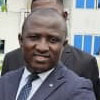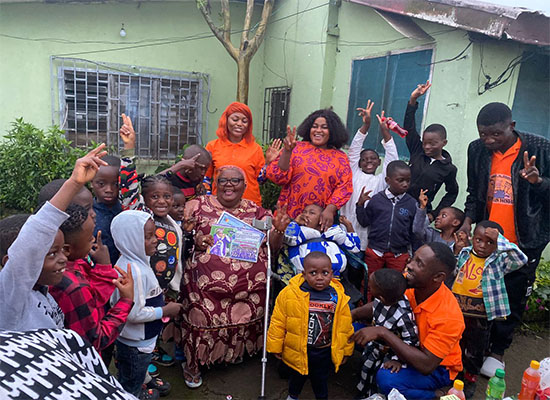
Peter Calson
Doctor


Doctor
Every child deserves the chance to thrive, regardless of their abilities. Children with disabilities face unique challenges, but with the right support and resources, they can overcome obstacles and reach their full potential. In this blog, we'll explore the importance of inclusivity, accessibility, and empowerment for children with disabilities.
Understanding Disabilities
Disabilities affect approximately 1 in 5 children worldwide. Common disabilities include: - Physical disabilities (e.g., cerebral palsy, spina bifida) - Intellectual disabilities (e.g., Down syndrome, autism spectrum disorder) - Sensory disabilities (e.g., visual or hearing impairments) - Emotional or behavioral disabilities (e.g., ADHD, anxiety) Challenges Faced by Children with Disabilities Children with disabilities often face: - Social isolation and stigma - Limited access to education and healthcare - Physical barriers in public spaces - Difficulty accessing recreational activities Empowerment through Inclusion Inclusive environments foster: - Social acceptance and friendship - Equal access to education and opportunities - Increased confidence and self-esteem - Better health outcomes Strategies for Supporting Children with Disabilities 1. Early intervention and diagnosis 2. Individualized education plans (IEPs) 3. Adaptive technologies and assistive devices 4. Accessible recreational activities 5. Family support and counseling Breaking Barriers and Building Futures Success stories of children with disabilities: Physical Disabilities: -Tatyana McFadden*: Born with spina bifida, Tatyana is a Paralympic athlete and advocate, winning multiple gold medals. Intellectual Disabilities: -Jason McElwain*: Autism didn't stop Jason from becoming a high school basketball star, scoring 20 points in his first game. Visual Impairments: Diane Chambers: Blind since birth, Diane is a talented musician and advocate. Hearing Impairments: -Marlee Matlin*: Deaf since 18 months, Marlee is an Oscar-winning actress (Children of a Lesser God). Other Inspirational Stories: - Nick Vujicic: Born without limbs, Nick inspires millions as a motivational speaker. These remarkable individuals prove that disabilities do not define one's potential. Every child deserves the chance to shine. By promoting inclusivity, accessibility, and empowerment, we can break barriers and build brighter futures for children with disabilities. Call to Action: Join us in promoting inclusivity and empowering children with disabilities. Share your story, volunteer, or donate to our organization .

Educator
Children with disabilities face daunting barriers in 3rd world countries, hindering their access to essential therapy and education. This blog explores the challenges, consequences, and potential solutions to break down these walls and create inclusive opportunities.
The Walls That Divide: 1. Physical Barriers: Inaccessible schools, hospitals, and therapy centers. 2. Social Stigma: Misconceptions and bias against disabilities. 3. Economic Obstacles: Unaffordable therapy and education. 4. Information Gap: Lack of awareness about disability rights and resources. Consequences of Inaccessibility: 1. Delayed Development: Untreated conditions worsen without therapy. 2. Low Self-Esteem: Social isolation damages confidence. 3. Limited Opportunities: Lack of education perpetuates poverty. 4. Increased Dependence: Unaddressed needs lead to lifelong dependence. Breaking Down Walls: Solutions 1. Accessible Infrastructure: Adapt schools, hospitals, and therapy centers. 2. Inclusive Education: Train teachers, adapt curriculum. 3. Affordable Therapy: Community-based rehabilitation, teletherapy. 4. Awareness Campaigns: Educate communities, dispel stigma. Success Stories: Physical Disabilities 1. Aisha's Story: A Nigerian girl with cerebral palsy, Aisha learned to walk with assistance after regular physical therapy sessions at a local therapy center. 2. Kofi's Story: A Ghanaian boy with spina bifida, Kofi gained independence in daily activities through occupational therapy at a specialized center. Autism Spectrum Disorder (ASD) 1. Rahul's Story: An Indian boy with ASD, Rahul improved social skills and communication through Applied Behavior Analysis (ABA) therapy at a therapy center. 2. Fatima's Story: A Pakistani girl with ASD, Fatima developed emotional regulation skills through play therapy at a specialized center. Visual Impairments 1. David's Story: A Kenyan boy with visual impairment, David learned Braille and independent living skills through therapy at a local center. 2. Sophia's Story: A South African girl with visual impairment, Sophia gained confidence in navigation and daily tasks through orientation and mobility therapy. Hearing Impairments 1. Jason's Story: A Ugandan boy with hearing impairment, Jason developed speech and language skills through auditory-verbal therapy at a therapy center. 2. Emily's Story: A Tanzanian girl with hearing impairment, Emily learned sign language and social skills through therapy at a local center. Intellectual Disabilities 1. Michael's Story: A Zimbabwean boy with Down syndrome, Michael improved cognitive skills and independence through occupational therapy at a specialized center. 2. Sarah's Story: A Moroccan girl with intellectual disability, Sarah developed life skills and social skills through therapy at a local center.

Carer
These stories demonstrate the transformative impact of therapy centers on children with disabilities.
Key Factors Contributing to Success 1. Access to specialized therapy centers 2. Trained therapists and healthcare professionals 3. Family support and involvement 4. Early intervention and consistent therapy 5. Inclusive and supportive community environments Call to Action: Support our organization which is working hard to break down these walls Donate, volunteer, or spread awareness to make a difference.